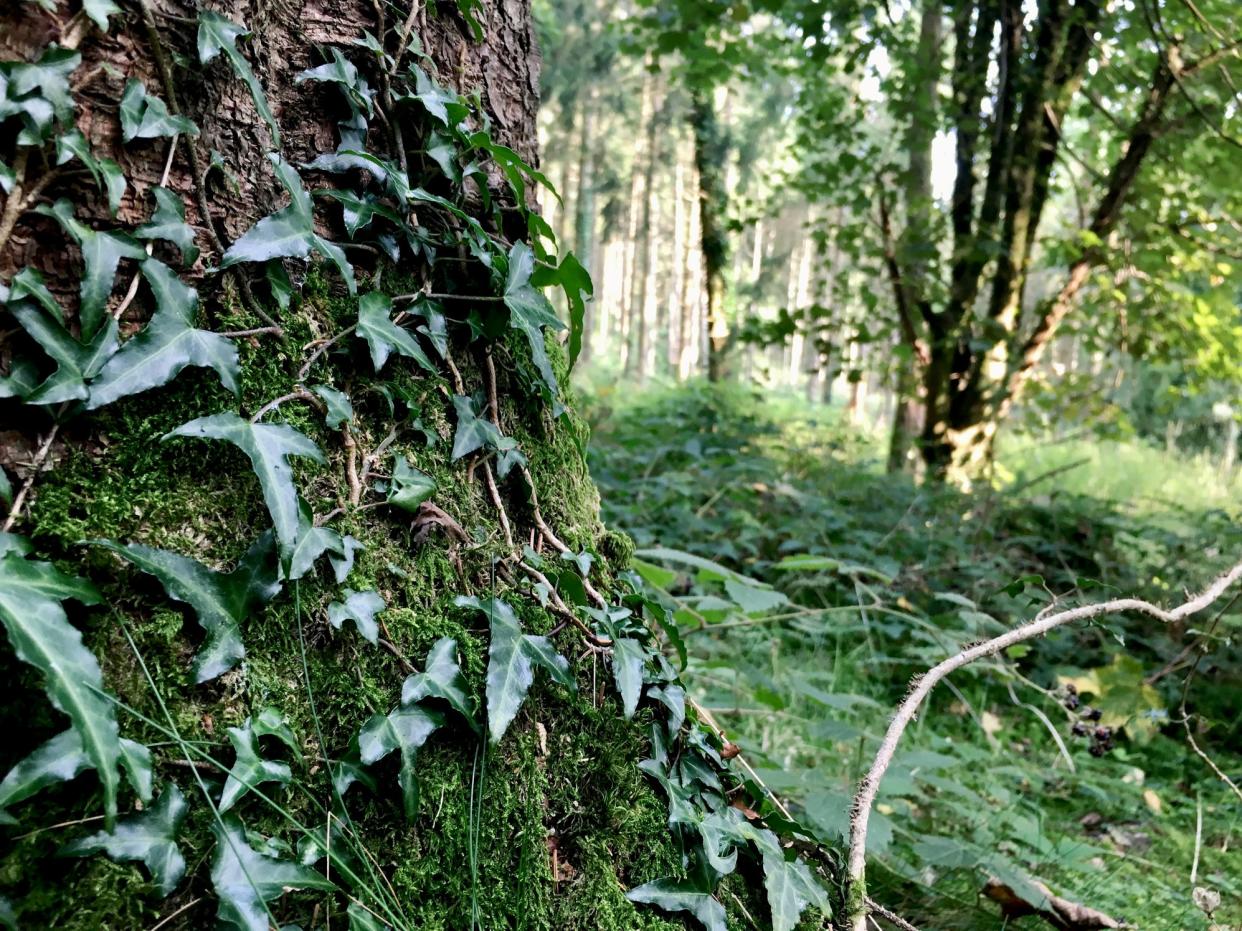Ivy becoming increasingly widespread in European forests as temperatures rise

All over Europe’s deciduous forests, rich green tangles of ivy flourish across the understory, carpeting woodlands and ascending even the mightiest trees.
These creeping plants, known as Hedera (meaning to grasp, in Latin) are flourishing like never before, a long-term study has revealed.
Examination of almost 2,000 plots to assess nearly 1,000 species, including lianas — the wider family to which ivy belongs — revealed the proportional occurrence of ivy has grown by an average of 14 per cent per site, according to a study led by Dr Mike Perring at the University of Ghent.
This ivy boom is believed to be due, in part, to greater rates of warming driven by climate change, as well as increased shade, and also because of some woodlands’ historical management methods.
Dr Perring told The Independent: “Over a span of nearly 40 years, ivy expanded, on average, into 14 per cent more plots per region.”
“What we have done is highlight, to my knowledge for the first time in temperate, rather than tropical areas, the large geographic extent of this ivy spread in the understorey.
“What is also really marked is that no other species exhibits such a geographically coherent pattern of increase — this is really quite striking.”
Ivy is often regarded as a problematic plague species due to the misconception its thick creeping vines prey on trees, insidiously scaling them before strangling them to death beneath a waxy green shroud.
But ivy is not a parasitic species and does not harm trees. It has separate root systems and provides numerous benefits for forest ecosystems — including for birds and insects, for which it can provide fruit and shelter at times of year when both are scarce. According to the UK’s Woodland Trust, ivy supports at least 50 species of wildlife, much of which provides a net benefit for trees.
To measure how ivy coverage in temperate European forest has changed, Dr Perring’s team used data stretching back 87 years.
Levels of ivy were surveyed across 1,814 — largely permanent — plots in 40 different forest regions.
The first round of surveys took place on the various plots between 1933 to 1994, and the second surveys took place between 1987 and 2015. On average there was a gap of 38 years between the initial survey and the follow-up survey in any given region.
The paper states that in absolute terms, ivy was found to have increased by 70 per cent — from 288 instances recorded in the initial surveys, to 496 instances recorded in the follow-up surveys out of the 1,814 total plots. However, this trend is distorted by the numerous recording timelines.
Furthermore, in areas where there were greater levels of warming recorded, so too was the incidence of ivy expansion.
“There was a much higher probability of finding ivy at a resurvey where it was absent initially where there had been a greater rate of warming,” Dr Perring said.
While ivy is not a parasite, its increased prevalence will have consequences, Dr Perring said. These can be both positive and negative, and include the potential for more carbon storage than might otherwise exist, and more food for birds and insects, but the plant may still have some undesirable impacts on young trees.
“It does use trees for support as it adheres with its roots. This support can have knock on consequences. Thus, if it gets to the canopy it can increase susceptibility of trees to windfall,” Dr Perring said.
“In the understorey, it drives biomass accumulation. This can have important functional consequences. For instance, for nutrient cycling. It can also extend the period over which carbon sequestration occurs given ivy's evergreen nature. Particularly in the tree canopy.”
He added: “It can also alter tree regeneration through allelopathic effects (a phenomenon where one plant inhibits the growth of another).
“This means ivy leaf litter exudes chemicals that prevent other species recruiting — including the next cohort of trees. So an adult tree won't die but a tree seedling could.”
“In the adult form, which occurs as ivy climbs up trees and starts to flower, it is a very useful nectar and pollen source when other species are not flowering.”
A phenomenon has been observed in separate studies in the tropics, where increased prevalence of liana species have led to the growth of less dense trees, which can’t store as much carbon.
Dr Perring said ecologists in Europe “should be aware of these changes”.
“Forest managers perhaps need to be more concerned, especially if the spread of ivy compromises other species in the understorey that they maybe want to have present," he said.
“And, if ivy were to spread into the canopy and start having effects like tropical lianas [and/or] lead to windfall, then there is the potential for undesired consequences."
He added: “However, as the paper makes clear, we really need to test these ideas as we don't have the data from these layers.”
Ivy’s current cultural standing is much lower than in the past. In ancient Greece, wreaths of ivy were used to crown victorious athletes, and in ancient Rome it was believed wearing a wreath of ivy could prevent a person from becoming drunk. Bacchus, the god of wine is often depicted wearing such headgear.
In the middle ages, ivy maintained its association with alcohol, with many pubs hanging tendrils of ivy outside their premises.
Today ivy is often seen as a decorative plant at weddings because of its ability to bind different plants together, symbolising fidelity.
The research is published in the journal Frontiers in Ecology and the Environment.
Read More
Council accused of ‘sneaking in after dark’ to fell trees in Doncaster
Public urged to plant trees to celebrate Queen’s platinum jubilee
Tree planting in England ‘below level needed to tackle climate crisis’
Humans waging ‘suicidal’ war against natural world, UN warns


